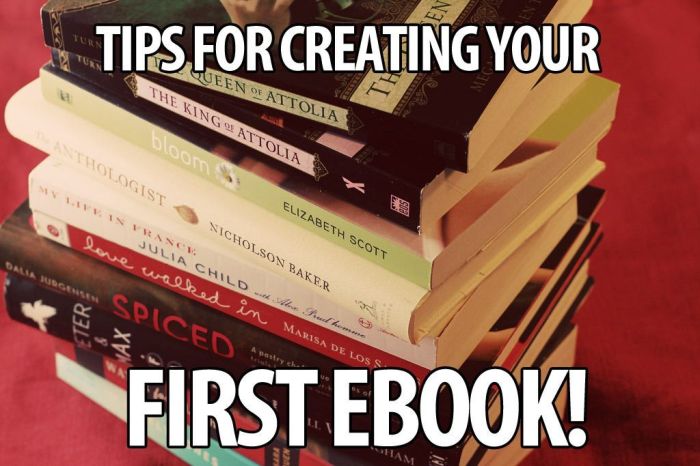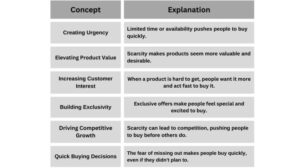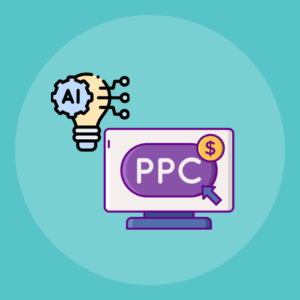
Ebook and course creation tips are essential for anyone looking to share knowledge and build a successful online presence. In today’s digital landscape, crafting high-quality educational materials not only elevates your expertise but also engages your audience effectively. Whether you’re a seasoned author or a first-time course creator, understanding the key strategies for ebook writing and course development can set you apart in a crowded market.
This guide delves into the critical steps of creating compelling ebooks and engaging online courses. From choosing the right niche to delivering content that resonates, you’ll discover practical techniques for writing, editing, and formatting your work. Additionally, we’ll explore marketing strategies that can amplify your reach and impact.
Ebook Creation Strategies
Creating a high-quality ebook requires a blend of strategic planning, insightful research, and diligent execution. The process spans several key stages, from conceptualization to publication. Understanding these steps can significantly enhance your chances of producing a successful ebook that resonates with your target audience.Choosing a profitable niche is crucial for the success of your ebook. It involves analyzing market demand, identifying gaps in existing literature, and aligning your expertise with reader interests.
This ensures that your content not only informs but also engages a specific audience.
Essential Steps in Creating a High-Quality Ebook
The creation of a high-quality ebook consists of a series of organized steps that streamline the process and enhance content quality. These steps include:
- Research Your Topic: Conduct thorough research to gather relevant information. Utilize credible sources such as academic articles, industry reports, and expert interviews to build a solid foundation for your content.
- Artikel Your Content: Create a detailed Artikel that organizes your thoughts and establishes a logical flow for your ebook. This Artikel serves as a roadmap for your writing process.
- Draft Your Manuscript: Begin writing your first draft based on the Artikel. Focus on getting your ideas down without worrying too much about perfection; this will come in later revisions.
- Edit and Revise: Editing is crucial for clarity and coherence. After completing your draft, take a break and then review it with fresh eyes, correcting errors and improving overall readability.
- Format for Publication: Choose an appropriate formatting style that suits your ebook’s purpose. Ensure that the layout is visually appealing and easy to read on various devices.
Choosing a Profitable Niche for an Ebook
Selecting the right niche can make or break your ebook’s success. Conducting market research to uncover trending topics and existing gaps will guide you in identifying a profitable niche. Key considerations include:
- Analyze Market Demand: Use tools like Google Trends, Amazon Bestsellers lists, and research to gauge interest in specific subjects.
- Identify Your Expertise: Leverage your knowledge and skills to tackle subjects where you can provide unique insights.
- Evaluate Competition: Look at existing ebooks in your chosen niche. Determine what they cover and identify areas where you can offer something different or better.
Writing, Editing, and Formatting Processes
The writing, editing, and formatting stages of ebook creation play critical roles in producing a polished final product. Each phase requires attention to detail and a specific approach:
- Writing: Focus on clear, engaging language. Aim for a conversational tone that connects with your audience. Use storytelling techniques where applicable to enhance relatability.
- Editing: Consider both content and technical aspects during editing. Look for consistency in style, grammar, and punctuation. Enlist beta readers to provide feedback from a fresh perspective.
- Formatting: Utilize software tools like Adobe InDesign or Canva for professional formatting. Pay attention to font choices, spacing, and chapter organization to ensure a reader-friendly experience.
“A well-structured ebook not only conveys information but also enhances the reader’s journey through visual appeal and logical progression.”
Following these guidelines will set a strong foundation for ebook creation, paving the way for successful publication and reader engagement.
Course Development Techniques
Creating an online course can be an exciting venture that allows you to share your knowledge and skills with a broader audience. However, the process requires careful planning and execution to ensure a successful learning experience for participants. In this section, we will explore structured techniques for developing a course, engaging content delivery strategies, and the significance of feedback and iteration in refining your course design.
Structured Approach to Course Development
A well-structured course serves as the foundation for effective learning. This involves outlining the course objectives, developing a curriculum, and defining the delivery format. Here are essential steps to consider in creating your course structure:
- Define Learning Outcomes: Clearly articulate what learners should be able to achieve by the end of the course. This sets the direction for your course content and assessments.
- Develop a Curriculum Framework: Organize your course into modules or sections that cover each topic comprehensively. This framework should logically progress from introductory concepts to more advanced material.
- Select Delivery Methods: Choose appropriate formats for content delivery, such as video lectures, written materials, or interactive sessions. Consider incorporating a mix of formats to cater to different learning styles.
- Create Assessments: Design quizzes, assignments, or projects that evaluate learner understanding and reinforce key concepts throughout the course.
- Plan for Resources: Identify any additional resources needed, such as reading materials, software, or guest speakers, to enhance the learning experience.
Strategies for Engaging Course Content Delivery
Engagement is critical in keeping learners motivated and interested in the course material. Implementing effective strategies for content delivery can significantly enhance the learning experience. Consider the following approaches:
- Interactive Content: Use polls, quizzes, and interactive assignments to encourage participation and reinforce learning.
- Storytelling Techniques: Incorporate storytelling elements to make complex concepts relatable and memorable. Real-life examples and case studies can illustrate practical applications of the material.
- Visual Aids: Utilize visuals such as infographics, charts, and diagrams to break down information and make it more digestible. Visual content can enhance understanding and retention.
- Community Building: Foster a sense of community among learners through discussion forums or group projects. Encouraging collaboration can enhance peer learning and support.
- Consistent Feedback: Provide timely and constructive feedback on assignments and questions to help learners stay on track and improve.
Importance of Feedback and Iteration in Course Design
Feedback is invaluable in the course design process, as it helps identify areas for improvement and ensures that the course meets the needs of learners. Iteration refers to the process of making adjustments based on feedback received. Here are key points highlighting the importance of feedback and iteration:
- Continuous Improvement: Regularly solicit feedback from learners to understand their experiences, challenges, and suggestions for enhancement. Use this input to make necessary adjustments to the course content or delivery methods.
- Testing and Refinement: Implement a beta version of your course with a select group of learners. Gather insights on their learning experience to refine your course before a full launch.
- Data-Driven Decisions: Analyze engagement metrics and assessment results to determine which areas of the course are effective and which require modification. Use data to inform future iterations.
- Adapting to Learner Needs: Be flexible in your course design and willing to make changes based on learner feedback and evolving industry standards.
- Enhancing Learning Outcomes: Focusing on continuous feedback and iteration fosters a learning environment where improvements lead to better outcomes for participants.
Marketing and Promotion Tactics

Effective marketing and promotion strategies are crucial for the success of your ebooks and courses. By leveraging the right tactics, you can reach a broader audience, build strong relationships, and ultimately enhance your sales. This section Artikels best practices for email list building, the significance of link popularity, and the use of PPC advertising in launching your educational content.
Email List Building Best Practices
Building an email list is a foundational step in promoting your ebooks and courses. A well-engaged email list allows you to communicate directly with potential customers and keep them informed about new releases and updates. Here are essential practices for effective email list building:
- Offer Valuable Incentives: Providing free resources such as ebooks, templates, or exclusive content in exchange for email subscriptions can significantly boost your list growth.
- Create Compelling Signup Forms: Ensure your sign-up forms are eye-catching and easy to fill out. Position them prominently on your website and landing pages.
- Utilize Social Media: Promote your email list on social media by sharing the benefits of subscribing and linking to your signup page.
- Host Webinars or Live Q&As: Using live events to gather emails can be effective. Participants often provide their emails to receive notifications or exclusive follow-up content.
- Segment Your Audience: Collect information on your subscribers’ interests to tailor your communications. This increases engagement and reduces unsubscribes.
Link Popularity and Traffic Generation
Link popularity plays a significant role in driving traffic to your educational content. It refers to the number and quality of external websites linking back to your site, which can enhance your visibility on search engines. Here’s why link popularity matters and how to improve it:
- Improves Search Engine Rankings: Higher link popularity signals to search engines that your content is credible and valuable, leading to better rankings.
- Increases Organic Traffic: More backlinks from reputable sites increase the likelihood of users clicking through to your content, driving organic traffic.
- Enhances Brand Authority: When authoritative sites link to your material, it boosts your brand’s authority and trustworthiness in the eyes of potential customers.
- Encourages Collaborations: Building relationships with influencers and bloggers can lead to guest posts or features that create additional links to your content.
- Utilize Social Sharing: Encourage your audience to share your content on social media, which can indirectly improve link popularity as more individuals share and discuss your work.
PPC Advertising for Launches
Pay-per-click (PPC) advertising is an effective strategy for promoting your ebooks and courses, particularly during launches. It allows you to reach targeted audiences quickly and efficiently. Here are strategies to maximize PPC advertising for your educational products:
- Define Your Target Audience: Use demographic data and interests to tailor your ads specifically to the audience most likely to purchase your content.
- Utilize Compelling Ad Copy: Create persuasive ad copy that highlights the benefits of your ebook or course, focusing on solving a problem or fulfilling a need.
- Optimize Landing Pages: Ensure that the landing pages your ads direct to are optimized for conversions, with clear calls to action and relevant content.
- Monitor and Adjust: Track your ad performance closely, analyzing metrics such as click-through rates and conversions to make necessary adjustments for better results.
- Implement A/B Testing: Experiment with different ad creatives and targeting options to determine which variations yield the highest engagement and conversion rates.
Final Summary

In conclusion, mastering Ebook and course creation tips can significantly enhance your ability to connect with learners and share valuable insights. By applying the strategies discussed, including effective marketing and iterative design processes, you can turn your passion for teaching into a thriving venture. Remember, the journey of creating your educational products is just as important as the end result, so embrace each step with enthusiasm and creativity.
Common Queries
What is the best way to choose a niche for my ebook?
Research market trends, identify your expertise, and analyze competitor offerings to find a profitable niche.
How long should my ebook be?
Ideally, your ebook should be between 20 to 50 pages, focusing on delivering value rather than hitting a specific page count.
What platforms are best for publishing my ebook?
Consider using platforms like Amazon Kindle Direct Publishing, Smashwords, or your own website for distribution.
How can I effectively promote my online course?
Utilize email marketing, social media, and strategies to attract and engage potential students.
Is it necessary to gather feedback on my course?
Yes, feedback is crucial for improving course content and increasing student satisfaction and retention.





